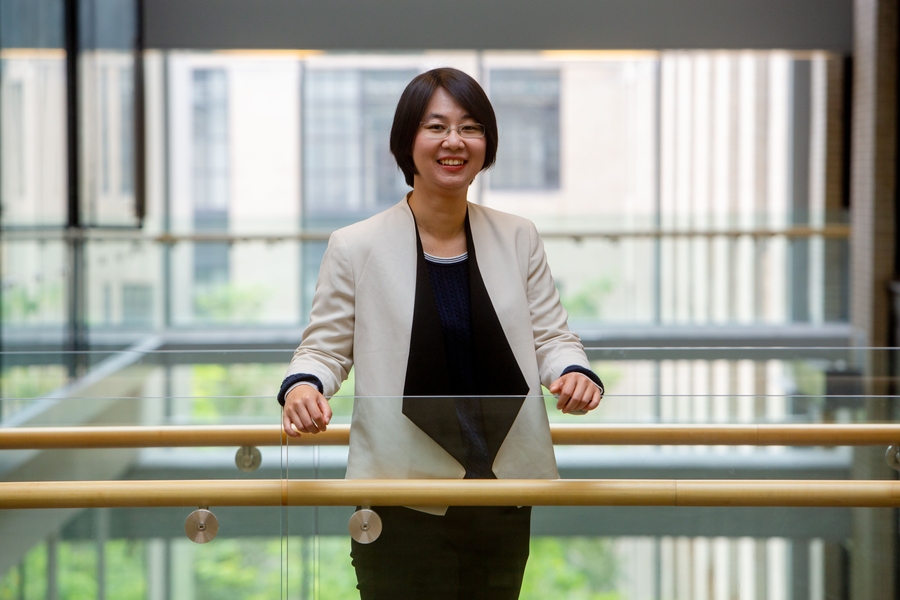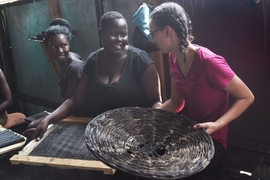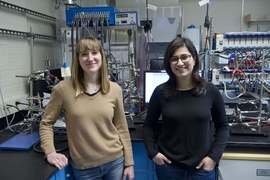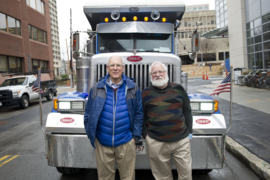Much of the conversation around energy sustainability is dominated by clean-energy technologies like wind, solar, and thermal. However, with roughly 80 percent of energy use in the United States coming from fossil fuels, combustion remains the dominant method of energy conversion for power generation, electricity, and transportation.
“People think of combustion as a dirty technology, but it’s currently the most feasible way to produce electricity and power,” explains Sili Deng, assistant professor of mechanical engineering and the Brit (1961) & Alex (1949) d’Arbeloff Career Development Professor.
Deng is working toward understanding the chemistry and flow that interacts in combustion in an effort to improve technologies for current or near-future energy conversion applications. “My goal is to find out how to make the combustion process more efficient, reliable, safe, and clean,” she adds.
Deng’s interest in combustion stemmed from a conversation she had with a friend before applying to Tsinghua University for undergraduate study. “One day, I was talking about my dream school and major with a friend and she said ‘What if you could increase the efficiency of energy utilization by just 1 percent?’” recalls Deng. “Considering how much energy we use globally each year, you could make a huge difference.”
This discussion inspired Deng to study combustion. After graduating with a bachelor’s degree in thermal engineering, she received her master’s and PhD from Princeton University. At Princeton, Deng focused on the how the coupling effects of chemistry and flow influence combustion and emissions.
“The details of combustion are much more complicated than our general understanding of fuel and air combining to form water, carbon dioxide, and heat,” Deng explains. “There are hundreds of chemical species and thousands of reactions involved, depending on the type of fuel, fuel-air mixing, and flow dynamics.”
Along with her team at the Deng Energy and Nanotechnology Group at MIT, she hopes that understanding chemically reacting flow in the combustion process will result in new strategies to control the process of combustion and reduce or eliminate the soot generated in combustion.
“My group utilizes both experimental and computational tools to build a fundamental understanding of the combustion process that can guide the design of combustors for high performance and low emissions,” Deng adds. Her team is also utilizing artificial intelligence algorithms along with physical models to predict — and hopefully control — the combustion process.
By understanding and controlling the combustion process, Deng is uncovering more about how soot, combustion’s most notorious by-product, is created.
“Once soot leaves the site of combustion, it is difficult to contain. There isn’t much you can do to prevent haze or smog from developing,” she explains.
The production of soot starts within the flame itself — even on a small scale, such as burning a candle. As Deng describes it, a “chemical soup” of hydrocarbons, vapor, melting wax, and oxygen interact to create soot particles visible as the yellow glow surrounding a candle light.
“By understanding exactly how this soot is generated within a flame, we’re hoping to develop methods to reduce or eliminate it before it gets out of the combustion channel,” says Deng.
Deng’s research on flames extends beyond the formation of soot. By developing a technology called flame synthesis, she is working on producing nanomaterials that can be used for renewable energy applications.
The process of synthesizing nanomaterials via flames shares similarities with the soot formation in flames. Instead of generating the byproducts of incomplete combustion, certain precursors are added to the flame, which result in the production of nanomaterials. One common example of using flame synthesis to create nanomaterials is the production of titanium dioxide, a white pigment often used in paint and sunscreen.
“I’m hoping to create a similar type of reaction to develop new materials that can be used for things like renewable energy, water treatment, pollution reduction, and catalysts,” she explains. Her team has been tweaking the various parameters of combustion — from temperature to the type of fuel used — to create nanomaterials that could eventually be used to clean up other, more nefarious byproducts created in combustion.
To be successful in her quest to make combustion cleaner, Deng acknowledges that collaboration will be key. “There’s an opportunity to combine the fundamental research on combustion that my lab is doing with the materials, devices, and products being developed across areas like materials science and automotive engineering,” she says.
Since we may be decades away from transitioning to a grid powered by renewable resources like solar, wave, and wind, Deng is helping carve out an important role for fellow combustion scientists.
“While clean-energy technologies are continuing to be developed, it’s crucial that we continue to work toward finding ways to improve combustion technologies,” she adds.











